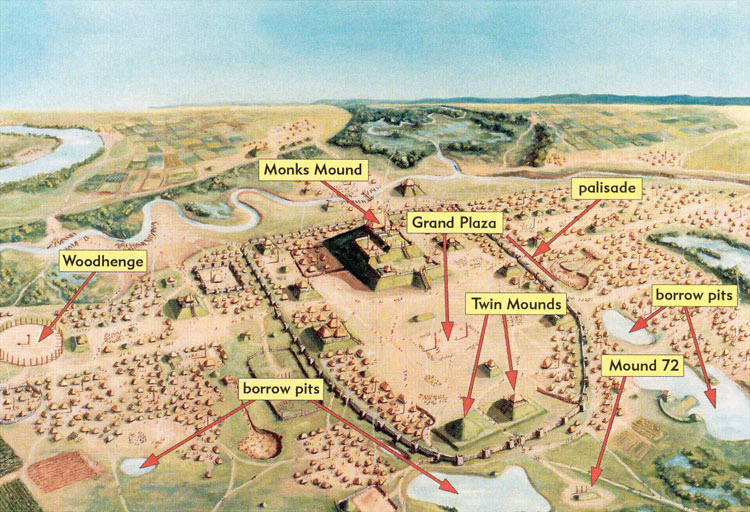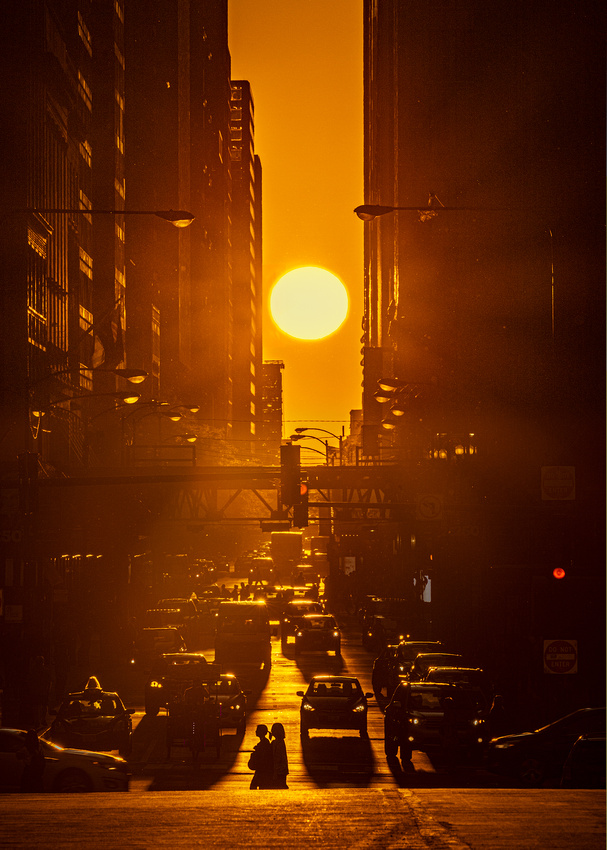Equinox
The equinox is near. On September 22, the sun rises and sets due east and west in Chicago. Day and night are each 12 hours.
After the September equinox, the sun rises and sets progressively southward. Days get shorter and nights get longer. By the December 21 solstice, the sun is as far south as it will go. It’s the shortest day of the year.
The sun then starts moving north. By the March 20 equinox, the sun again rises due east and sets due west. Daytime and nighttime are again 12 hours each.
After the March equinox, the sun continues northward. The days get longer, and the nights get shorter.
By the June 20 solstice, the sun is as far north as it will go. It’s the longest day of the year. After the solstice, the sun begins moving south and the days get shorter again.


Woodhenge
Ancient henges are structures perfectly aligned to frame the sunrises and sunsets of the equinoxes and solstices. The closest example is near downstate Collinsville, Illinois in Cahokia Mounds State Park.
There were a series of five circular wooden henges built on the site by the Mississippian culture. Woodhenge III was built around 1,000 AD.
It contains 48 postholes to hold red cedar logs, considered sacred by many Native American groups. Thought by archaeologists to be a solar calendar, it’s capable of marking equinox and solstice sunrises and sunsets to time agricultural and religious observances.
During the equinoxes, the sun rises due east of the timber circle. From the center of the circle, the sun emerges from in front of Monks Mound roughly a half mile away.


Source: https://www.mexicolore.co.uk/aztecs/home/skywatchers-of-cahokia
Chicagohenge
The Chicago street grid is laid out east-west. An equinox is a chance to photograph the rising or setting sun between skyscrapers in an urban henge.
Fellow photographer Scott Fuller and I ventured to downtown Chicago last September for our first try. Despite arriving two hours early, the classic location at Washington Avenue in Millennium Park was overrun with photographers and news crews.
We hiked south to a median strip on East Monroe next to the Art Institute. It was a clear view to the west. Eventually there were a dozen photographers crowded on that thin strip of concrete in the middle of pre-COVID traffic.
The experience of being there was better than the photo. I felt a bit of the same magic that the Mississippian peoples must have experienced as they marveled at the sun rising in front of Monk’s Mound. Nobody said a word as we watched the sun set between the skyscrapers.
Thanks for looking,
Chuck Derus
